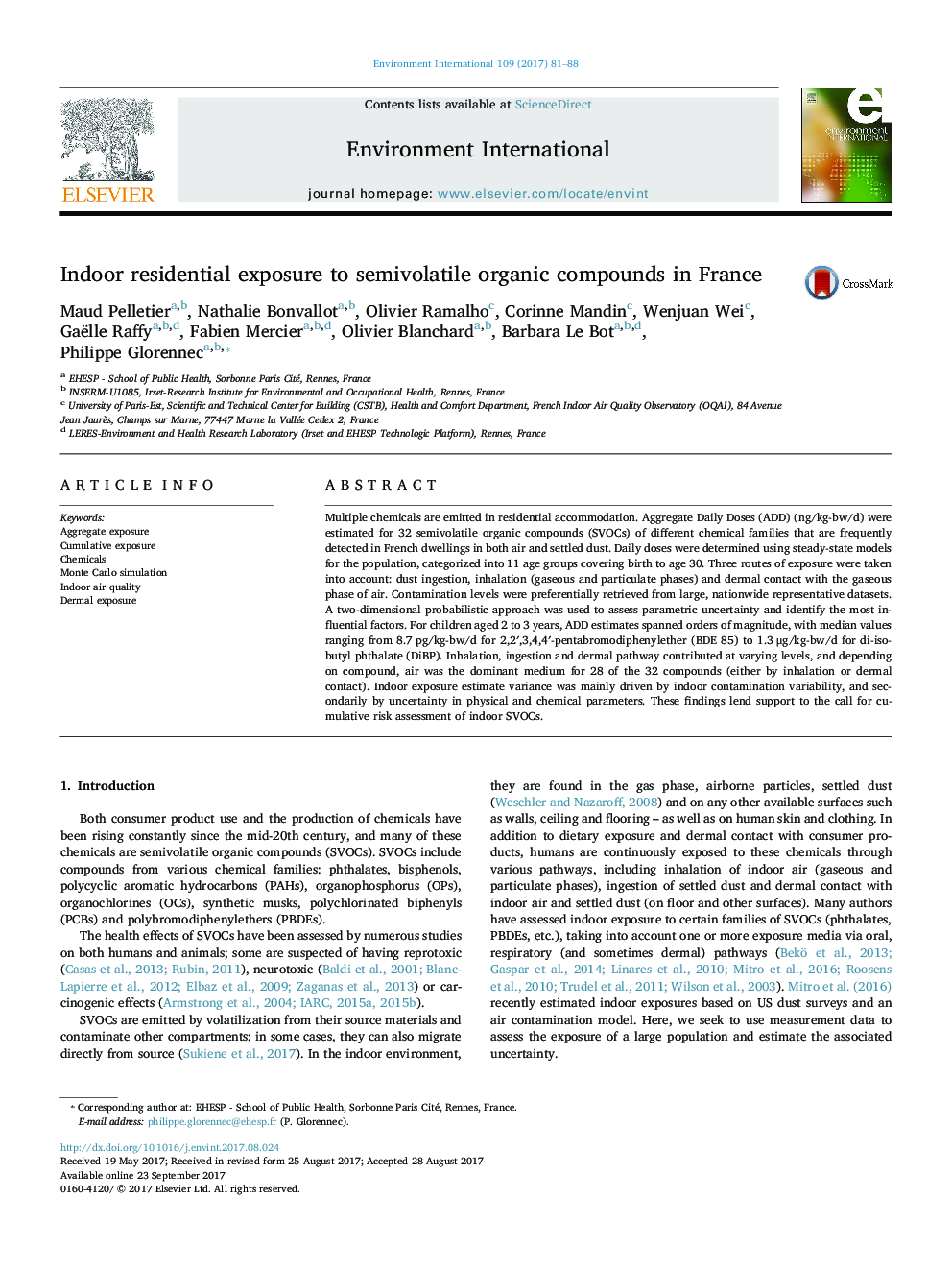| کد مقاله | کد نشریه | سال انتشار | مقاله انگلیسی | نسخه تمام متن |
|---|---|---|---|---|
| 5748183 | 1619021 | 2017 | 8 صفحه PDF | دانلود رایگان |
- Indoor exposure to 32 SVOCs was assessed with nationwide representative data.
- Inhalation, dust ingestion, dermal exposure contributions vary across chemicals.
- Air (inhalation and dermal exposures) was the predominant media for most compounds.
- 2D Monte Carlo analysis was conducted to analyze variability and uncertainty.
- Concentration variability had more influence on results than parameters uncertainty.
Multiple chemicals are emitted in residential accommodation. Aggregate Daily Doses (ADD) (ng/kg-bw/d) were estimated for 32 semivolatile organic compounds (SVOCs) of different chemical families that are frequently detected in French dwellings in both air and settled dust. Daily doses were determined using steady-state models for the population, categorized into 11 age groups covering birth to age 30. Three routes of exposure were taken into account: dust ingestion, inhalation (gaseous and particulate phases) and dermal contact with the gaseous phase of air. Contamination levels were preferentially retrieved from large, nationwide representative datasets. A two-dimensional probabilistic approach was used to assess parametric uncertainty and identify the most influential factors. For children aged 2 to 3 years, ADD estimates spanned orders of magnitude, with median values ranging from 8.7 pg/kg-bw/d for 2,2â²,3,4,4â²-pentabromodiphenylether (BDE 85) to 1.3 μg/kg-bw/d for di-isobutyl phthalate (DiBP). Inhalation, ingestion and dermal pathway contributed at varying levels, and depending on compound, air was the dominant medium for 28 of the 32 compounds (either by inhalation or dermal contact). Indoor exposure estimate variance was mainly driven by indoor contamination variability, and secondarily by uncertainty in physical and chemical parameters. These findings lend support to the call for cumulative risk assessment of indoor SVOCs.
Journal: Environment International - Volume 109, December 2017, Pages 81-88
